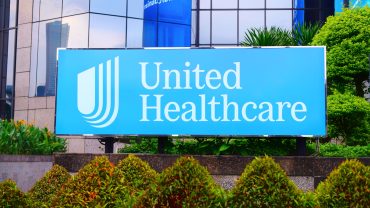
- AI in Healthcare
- Earnings Season
- Insurance Forecast
UnitedHealth Cuts 2025 Outlook as Medical Costs Surge
6 minute read

Rising healthcare costs force UnitedHealth to slash 2025 earnings forecast below Wall Street expectations, triggering sector-wide concerns
Key Takeaways
- UnitedHealth shares drop over 4% in premarket trading after the company projects 2025 adjusted earnings of at least $16.00 per share, significantly below Wall Street’s $20.91 expectation.
- Medical cost ratio climbs to 89.4% in the second quarter from 85.1% year-over-year as healthcare expenses surge beyond premium charges, with Medicare Advantage costs rising 7.5% versus the originally anticipated 5%.
- Revenue grows 12% year-over-year to $111.6 billion despite earnings challenges, driven by gains across both UnitedHealthcare and Optum divisions.
Introduction
UnitedHealth Group faces mounting pressure from investors as elevated medical costs continue to squeeze margins across its insurance operations. The healthcare giant’s disappointing 2025 forecast underscores broader challenges affecting not only the health insurance sector but also the tech-driven healthcare industry.
The company’s projection of 2025 adjusted earnings of at least $16.00 per share falls substantially short of Wall Street’s $20.91 expectation. This guidance miss represents one of the most significant forecast shortfalls for a major healthcare insurer this year, signaling persistent cost pressures that extend beyond UnitedHealth’s immediate operations.
Key Developments
UnitedHealth suspended its 2025 guidance earlier this year due to unprecedented medical cost increases and leadership transitions following former CEO Andrew Witty’s sudden departure. The company now expects its insurance unit’s medical care ratio to range from 89% to 89.5% for 2025, reflecting the continued strain on profitability.
During the second quarter, medical expenses accelerated beyond premium income as the medical care ratio jumped to 89.4% from 85.1% in the prior year. This increase exceeded analyst expectations of 89.3% and highlights the company’s struggle to balance competitive pricing with rising claims costs.
The cost pressures stem largely from Medicare Advantage plans, where UnitedHealth originally priced offerings for a 5% medical cost trend but now expects approximately 7.5%. This misalignment between pricing assumptions and actual cost inflation forces the company to reassess its risk management and pricing strategies across multiple product lines.
Market Impact
UnitedHealth shares declined over 4% in premarket trading following the earnings announcement, extending the stock’s year-to-date decline to more than 44%. The significant gap between company guidance and analyst consensus has prompted multiple firms to reduce price targets for the healthcare giant.
Wolfe Research lowered its price target to $330 from $363, while Leerink Partners reduced its target to $340 from $355. Despite maintaining an outperform rating, analysts express growing concerns about the company’s near-term earnings trajectory and margin recovery timeline.
The broader healthcare insurance sector faces similar headwinds as medical utilization patterns normalize following pandemic-related deferrals. Competitors monitoring UnitedHealth’s challenges may need to adjust their own pricing and reserve assumptions to avoid similar margin compression.
Strategic Insights
UnitedHealth’s earnings revision signals a fundamental shift in how insurers must approach Medicare Advantage pricing and risk assessment. The company’s experience suggests that traditional actuarial models may underestimate post-pandemic medical cost inflation, particularly as seniors proceed with previously delayed procedures.
The crisis accelerates demand for sophisticated analytics and AI-driven cost prediction tools across the insurance industry. Companies that can better forecast and manage medical cost trends will gain competitive advantages in pricing and market positioning.
UnitedHealth’s diversified revenue streams through its Optum division provide some stability during this transition. According to CNBC, Optum Rx revenue surged nearly 19% to $38.46 billion, demonstrating the value of vertical integration in healthcare services.
Expert Opinions and Data
CEO Tim Noel maintains confidence in the company’s ability to navigate current challenges. “Despite challenges across our operations, we are confident in resolving these issues and reclaiming our earnings growth potential,” Noel stated during the earnings call.
Stephen Hemsley, who returned as CEO to restore investor confidence, emphasized operational improvements ahead. “UnitedHealth Group has embarked on a rigorous path back to being a high-performing company fully serving the health needs of individuals and society broadly,” Hemsley explained.
The company reported second-quarter earnings of $3.74 per share with adjusted earnings of $4.08 per share, missing analyst estimates of $4.67. Operating earnings fell sharply to $5.2 billion from $7.9 billion year-over-year, while net margins compressed to 3.1% from 4.3%.
Despite earnings pressure, UnitedHealth maintained strong revenue growth of over 12% year-over-year to $111.6 billion. The company returned $4.5 billion to shareholders through dividends and share repurchases while increasing its quarterly dividend by 5% to $2.21 per share.
Conclusion
UnitedHealth’s forecast revision reflects systemic challenges facing healthcare insurers as medical cost inflation exceeds pricing assumptions built into current premium structures. The company expects earnings growth to resume in 2026 as operational improvements take effect and cost trends stabilize.
The healthcare giant’s experience serves as a cautionary signal for the broader insurance sector, highlighting the urgent need for more sophisticated risk assessment and pricing models. UnitedHealth’s ability to navigate these headwinds while maintaining market leadership will influence how competitors approach similar challenges in an increasingly complex healthcare landscape.








